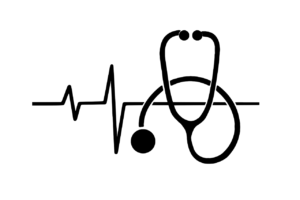
Recent innovations in the healthcare sector have improved medical care and patient experience, and have the potential to do even more with the right supporting communication solutions. The introduction of electronic health record (EHR) and electronic medical record (EMR) management systems has provided a more efficient way to manage patient history, but many such systems need help to communicate information between facilities.

Here are a few ways healthcare organizations can improve their communications infrastructure:
1. Search for Other Storage Solutions
The healthcare industry needs flexible data centers to easily maintain, expand storage when necessary, troubleshoot any problems that occur, and more. While on-premises solutions have been the most trusted data storage options because of the control they offer, cloud storage options are becoming more widely used.
The Cloud is highly flexible and features cost savings when compared to an on-premises deployment. By storing your data in the cloud, high availability and disaster recovery options can be easier to implement, along with other advantages such as better application integration and greater amounts of storage and resources. When looking to migrate from an on-premises storage solution to storing data in the Cloud, consider the security and compliance measures necessary for your organization.
2. Modernizing Fax
Fax technology has a pop-culture reputation for being out-of-date, however it is still an essential tool in the healthcare industry. Its inherent data security features are critical for protecting patients’ privacy, and especially for complying with HIPAA regulations.
That said, traditional fax machines can cause more trouble than necessary. They break down easily, patient information can be sent to the wrong person, and they require expensive paper, ink, and regular maintenance.
With a solution that allows you to send faxes over your existing computer network, you can ditch your traditional fax machine and expensive phone lines, all while increasing patients’ security.
3. Secure File Exchange Made Easy
Email would be a convenient way to send patient information back and forth, however it is not secure. Additionally, it has a small limit on the file size you may attach to the message.
One hospital’s radiology department was solving this problem by burning large files to CDs. They would then ship each CD to the necessary hospital or medical facility in their network. By switching to SendSecure, they were able to replace their shipping method with a secure near-instantaneous transfer over the internet. This reduced costs and dramatically streamlined their processes.
SendSecure is a HIPAA-compliant collaborative secure file exchange platform that takes minimal time and effort to deploy. It uses a double encryption method during both the upload and download processes, unlike most email servers which only encrypt files while in transit. Files can be up to 5TB in size, and two-factor authentication improves security against both hackers and misaddressed emails.
SendSecure is also available as an on-premises install.
Request your FREE 14 Day Trial of XM Fax or XM SendSecure





Comments are closed.